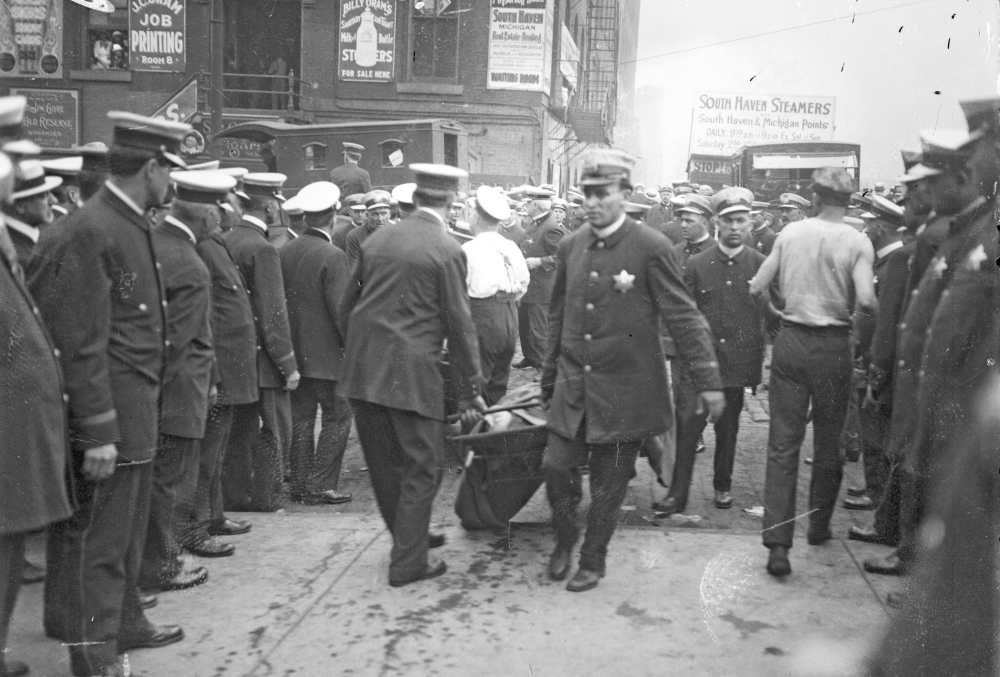The Chicago Police Department was immediately dispatched to the scene of the disaster to coordinate rescue and recovery efforts. Crowds of onlookers almost immediately congested the streets and bridges throughout downtown Chicago, and dozens of Chicago police were deployed to maintain control of the crowds.
The CPD provided horse-drawn trucks to assist in any way during the rescue and recovery. Patrolmen Fred Fisher and John Lescher were on duty at the Clark Street bridge and used a rowboat to assist several passengers to safety.
Police also arrested the Eastland's Captain Harry Pedersen and took him into custody after he ordered the welders to stop cutting holes in the hull, as they were “ruining his ship.” Captain Pedersen's actions angered a crowd of people who had already been stirred by his failure to properly command his ship. The crowd called for Captain Pedersen to be lynched or drowned. The officers' decision to remove the captain likely saved him from the mob’s intended actions.
Other men from the CPD were busy aiding in life-saving attempts for the struggling victims. Bodies were brought up from the hold faster than awaiting doctors and nurses could handle them. Chief police ambulance surgeon, Dr. Thomas A. Carter, would call out, “Pulmotor!” This respiratory apparatus was brought over to where the doctor huddled around a body, using it to force water out of the lungs.
Traffic patrolman, Walter P. Brooks, spent 20 hours in the Chicago River rescuing people. Officer William Ryan broke his leg as he was helping people get off of the Eastland.
Though brave and strong, many of the policemen called to the scene struggled with the horror they witnessed on that fateful day. Officer Patrick Lally, who had assisted with the recovery of victims, returned home at the end of the day and sat down in his chair and cried – it was the first time his family had ever seen him cry.











